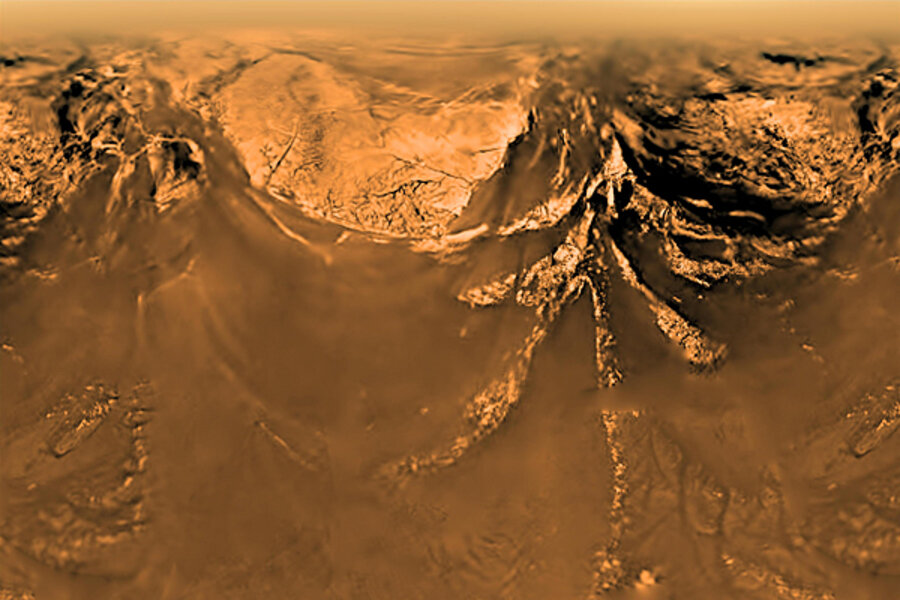Titan's giant sand dunes shaped by 'backward' winds, study finds
Loading...
Gusty winds that blow in reverse of prevailing weather on Saturn's largest moon Titan appear to shape some of the moon's odd equatorial sand dunes, a new study finds.
Huge dunes of tiny particles of carbon cover more than 20 percent of Titan's surface. A particular band of these dunes — within about 30 degrees latitude of the equator — have been puzzling to scientists. Their shape suggests they were formed by winds blowing sand from west to east, yet climate models predict the wind there is almost always blowing in the opposite direction.
A new model by Tetsuya Tokano at the Institut für Geophysik und Meteorologie in Germany could help solve the mystery. The research is detailed in the journal Aeolian Research.
Mysterious winds
According to the model, winds in that region do typically point toward the west, except for two times a year, around each equinox, when strong gusts switch directions and blow toward the east. Although these Titan winds are much less frequent, they seem to dominate the formation of sand dunes beneath them. [Map of Titan's winds.]
"It takes some minimum (threshold) wind speed for sand to start moving, so even though winds are more frequently westward, if the sand responds only to the strongest winds, then the orientation of the dunes will reflect that of the rarer but faster eastward winds," wrote physicist Ralph Lorenz of John Hopkins University in a Perspectives article published July 30 in the journal Science.
The strangely oriented dunes on Titan were first observed by the NASA's Cassini probe in 2005 and came as a surprise to researchers expecting the reverse based on the prevailing westward winds in the upper atmosphere.
Basic principles of planetary physics maintain that the winds of any planet or moon should balance out globally, or else cause a shift in its rotation, Lorenz said.
"If there were only eastward winds everywhere, it would accelerate Titan's rotation infinitely and slow down the wind, but this is not the case," Tokano said.
Reverse direction
Tokano's Titan wind model resolves this apparent imbalance by tying the culprit wind to periods that are very brief during the spring and autumn equinoxes.
Though occurring only every 14.5 Earth years (a Titan year is 29.5 years long), the seasonal reversals are so strong that their winds exert a dominating influence on the shape of the perplexing sand dunes.
"The dunes appear to record only the blast of (W-E trending) winds at equinox. Even though the wind is usually E-W, the average winds are not enough, it seems, to move the sand much," Lorenz said.
Scientists attribute the winds' turbulent mixing to solar energy, which disproportionally bathes the lunar surface when Titan faces the sun head-on during each equinox.





